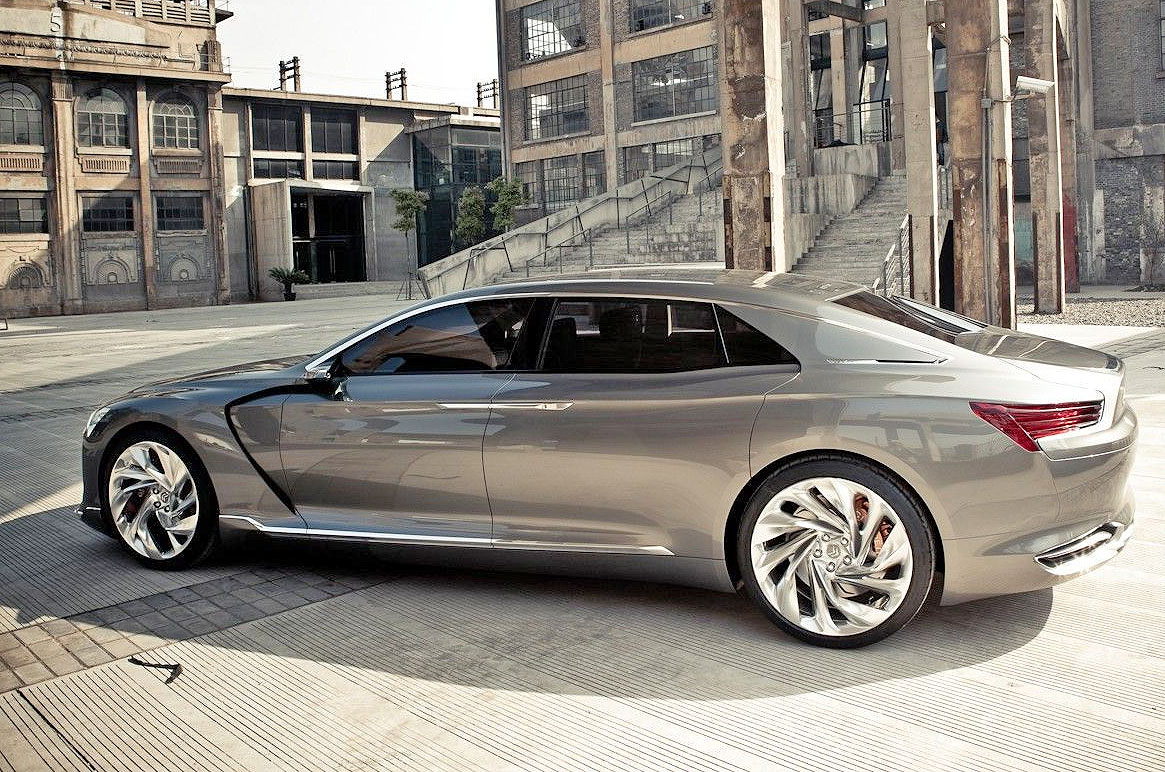The concept cars we totally forgot about
Slide of Concept cars are a way for car manufacturers to flex the muscles of their imaginations. This might happen almost entirely in secret, or as a way of promoting the brand at an international motor show, or something in between. Concepts of one kind or another have been around since at least the 1930s. Many remain in the public memory for years, but most are quickly forgotten as soon as a new batch turns up. For example, do you remember this remarkable concept limousine from Citroën in 2010? From many hundreds of possibilities, here are 44 of the perhaps less well-remembered concepts in automotive history, listed in chronological order. If you recognise more than ten of them, you’re doing very well. Slide of Aston Martin Atom (1940) The Atom was a small and dramatically styled saloon initially fitted with a 2.0-litre overhead-cam engine, though this was replaced by a very slightly larger-capacity pushrod unit in 1944. David Brown (1904-1993) drove it shortly before deciding to buy the company, so he must have been impressed, but there was never to be a production version. Slide of Chrysler Falcon (1955) Designed primarily by Virgil Exner (1909-1973) and built by Ghia, the Falcon was a racey two-seat roadster powered by a 4.5-litre version of the Chrysler Hemi V8 engine. Revealed two years after the original Chevrolet Corvette, and around the same time as the first-generation Ford Thunderbird, it might have been a competitor for both, but Chrysler decided not to go ahead with it. Slide of Alfa Romeo Carabo (1968) Marcello Gandini (born 1938) must have been looking the future square in the face when he designed the low wedge shape and scissor doors for the mid-engined Carabo. Alfa Romeo did not allow it to go beyond the concept stage, and it’s possible that the world just wasn’t ready for something like this in the 1960s. However, the Carabo bears a strong resemblance to another car designed by Gandini. This was the Lamborghini Countach which, unlike the earlier concept, went on sale in 1974. Slide of Mazda RX-500 (1970) At first glance, the RX-500 seemed like it had been designed for the same reasons as the Alfa Romeo Carabo. It had a wedge shape (though not quite as extreme as the Carabo’s), a mid-mounted engine (in this case a twin-rotor), butterfly swing doors and gullwing engine covers. All of this screamed ‘supercar!’, but in fact the RX-500 was intended as a showcase for Mazda’s research into safety. Among other things, it had a row of lights at the rear to indicate to following traffic whether the car was accelerating, maintaining speed or closing down. Slide of Nissan 126X (1970) Yet another wedge-shaped concept from 1970 (there was a lot of that sort of thing going on at the time), the 126X had the same changing-rear-light feature also found on the Mazda RX-500. Its shape was slightly less supercar-like, though in some ways even odder, than those of either the Mazda or the Alfa Carabo. In one respect Nissan went a step ahead of the other manufacturers mentioned – access to the interior was via a canopy which hinged from the front and consisted of the roof, windscreen and front body panels. Slide of Ford Cirrus (1972) Mechanically, the Cirrus fastback was simply a Ford Escort RS1600, the Cosworth BDA-powered hot version of the first-generation small saloon. It didn’t look like one because its design was based on the winning entry in a car design competition organised by the Institute of British Carriage and Automobile Manufacturers and promoted by the Daily Telegraph. It later transpired that the successful entrant was a professional designer who worked for Chrysler. Slide of Volvo VESC (1972) Volvo was already famous for its insistence on car safety when it unveiled the VESC at the 1972 Geneva Motor Show. It was full of equipment which was unusual at the time but very common now, including many airbags, automatically deploying headrests, anti-lock brakes, automatic fuel supply cut-off, an integrated rollcage, acoustic reversing warning and a steering wheel which was pulled forward in a frontal impact. The overall styling reappeared in slightly toned-down form in the Volvo 200 series, which went on sale in 1974. Slide of Alfa Romeo New York Taxi (1976) Italdesign’s response to a challenge laid down by the New York Museum of Modern Art was only four metres long, but it could seat five people and had space under the seats to fit folded wheelchairs. To add to the practicality, there were sliding doors on both sides, a very unusual feature for 1976. The project stopped after the vehicle was built, which is why you don’t associate Alfa Romeo with New York cabs today. Shame, as it’s an intriguing concept. Slide of AMC AM Van (1977) Styled to look like the AMC Pacer, this van was one of seven vehicles created for the Concept 80 tour created by AMC to showcase its id

This is another headline indexed and brought to you by the AUTOMUNDO website.
